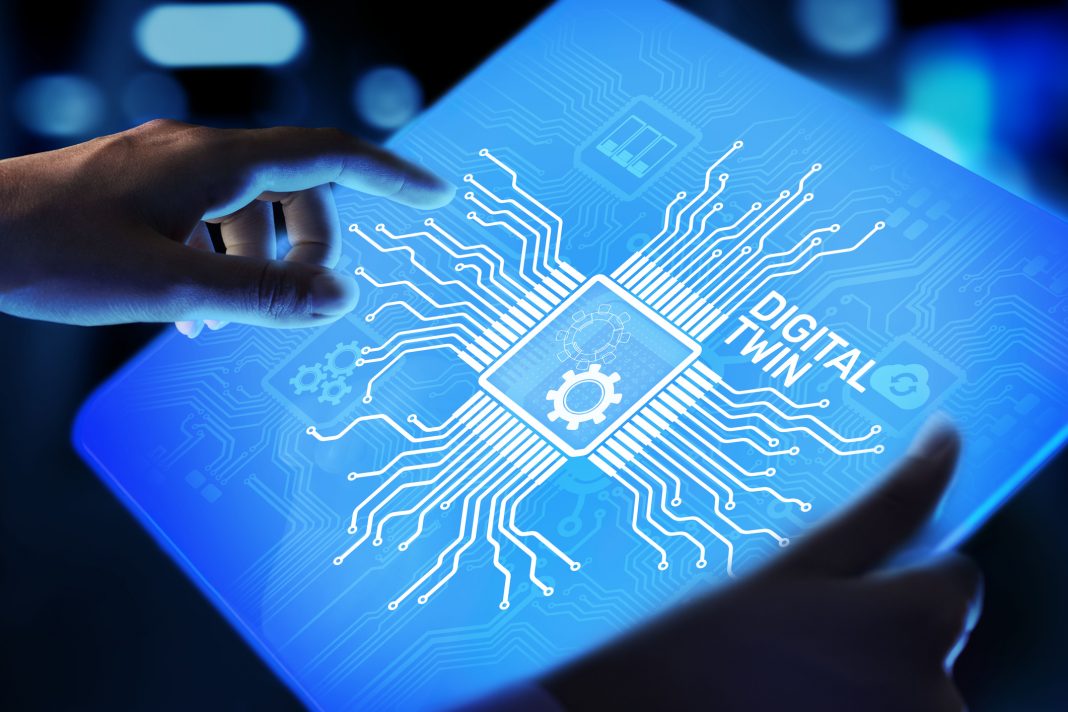The latest webinar hosted by AMC Bridge saw a panel of experts explore the role of some simulation technology in the accurate modelling of products, systems and processes
The latest AMC Bridge executive series of webinars, held in April, brought together a panel of industry experts to discuss the essential role of simulation technologies in accurate modelling within the digital twin.
The panel included: David Heiny, co-founder and CEO of SimScale; David Weir-McCall, industry marketing manager – architecture at Epic Games; Eveart Foster, director of technology adoption of BuiltWorlds; Igal Kaptsan, general manager software at GE Additive; Igor Tsinman, co-founder and president of AMC Bridge; and Qinghui Yuan, director of modelling and data science at Donaldson. The webinar was moderated by Jim Brown, founder and president of Tech-Clarity.
Why is the digital twin so important?
It is clear that businesses can reap a great deal of benefits from the successful implementation of digital twins. Those benefits include improved product development processes, greater insight into the performance of systems or buildings, comparisons of “as-designed” versus “as-built” conditions of a product or building, and so many more.
Are digital twins valuable without simulation technology?
Including simulation as part of a digital twin plays an important role in predicting the performance and reliability of a product or system. The simulation also impacts many other aspects of the lifecycle of a product or system, such as analysing energy efficiency, buildability or manufacturability, predicting the long-term cost of ownership, and many more. Consequently, it raises the key question: “Are digital twins valuable independent of simulation?”
David Weir-McCall from Epic Games acknowledged that “there is a lot of value where simulation isn’t required – areas such as capturing and storing historical and current data, managing operational performance, and real-time monitoring of systems” are all aspects of a product lifecycle that benefit from the use of digital twins, but do not require simulation. He added: “Historical data can be used to inform future design decisions.”
Donaldson’s Qinghui Yuan offered that combining the use of artificial intelligence and machine learning with data science can extract substantial value from historical data captured by digital twins.
In the construction world, Eveart Foster of Builtworlds suggested that data captured and included in a digital twin can be used as a benchmarking tool illustrating the progress of a job, assisting in error avoidance and the prevention of the rework such errors cause.
With so many avenues to pursue, it is clear that digital twins, with or without simulation, are included to provide a significant business value.
“Overall, the idea of a digital twin is more like a journey. Simulation can be one step of that journey – but there are many steps,” Tsinman said.
The first thing to establish when deploying a digital twin is the business objective of that digital twin.
“In a way, we are all using digital twins, but we don’t realise it,” said Kaptsan. “We have systems such as smart homes and devices that we can control from anywhere!”

How to gain more value from digital twins using simulation?
Using simulation in conjunction with a digital twin can help improve innovation in ways like validating design decisions, saving time in development through better validation and improving products through optimisation. But they can also help in the operational phases of products, equipment, systems, buildings or other assets.
Where do you see companies looking to extend a digital twin value with simulation technology?
Kaptsan noted that from a 3D printing point of view, it is not possible to complete any binder jet printing projects without simulation. This is because the scaling and sintering processes require simulation to accurately print a model, thus improving results and reducing the need for reprinting.
Eveart Foster supported the notion that simulation in a digital twin can be incredibly beneficial in the building construction industry. Concepts such as energy modelling from a 3D BIM model to simulate the amount of energy required for a building will perform for 10, 20, 30 years or more.
Additionally, being able to analyse scan and surface data can provide a valuable insight into the volumetric requirements of materials, such as concrete, required to accomplish a specific part of the building process.
Simscale’s David Heiney cited an interesting use case for simulation in a digital twin on a “city scale”. Simulating the impact of wind conditions can significantly improve a city’s ability to predict and prepare for natural disasters such as hurricanes. Combining historical data with the live data collected by metrology equipment located throughout a city enables the accurate modelling of various conditions and helps plan for and even avoid dramatic impacts of natural disasters.
The panellists agreed that the value of digital twins is well established, and the role simulation can play in increasing that value is significant. It is clear that when a company decides to implement digital twins, they must first establish their business objectives and then must determine how to proceed.
What are the first steps to focus on to get more value out of digital twins with simulation?
Keeping in mind that the deployment of digital twins is like a journey, Tsinman noted that initially, digital twins can be “a digital copy of a physical object” and suggested that one essential step is to collect as much data about and from the product, building or system as possible. Without data, historical and live, digital twins may lack in value, and simulation will not be helpful. Igor suggested that starting small and carefully planning the process is prudent.
Yuan suggested that companies might consider hybridising data and simulation and that the use of artificial intelligence and machine learning early on in the process will yield stronger value in the long run.
What does the poll say?
When prompted to share why digital twins were important in their organisations, audience members indicated a fairly even split of 33% between the desire to drive continuous improvement initiatives in their company and improving their designs and design-related decision making.
Another 25% of participants noted that monitoring and improving product, system or building performance was the most important benefit for their company. Communicating designs was clearly not as important to those companies to deploy digital twins as these other benefits.
AMC Bridge
Head office (USA): contact@amcbridge.com
UK office: andyph@amcbridge.com














